Last summer, a Colorado father and his 14-year-old son died from carbon monoxide poisoning in their tent—a preventable tragedy that shows how deadly camping mistakes can be.
Over 30,000 camping injuries land people in emergency rooms every year. Another 75,000 need doctor visits. Most could have been avoided.
You don’t need to be scared of camping. You need to be smart about it. These 12 critical camping mistakes kill and injure thousands of outdoor enthusiasts annually.
Learn what they are, why they’re dangerous, and exactly how to avoid them. Your life might depend on knowing the difference between a minor mishap and a fatal error.
1. Using Camping Stoves or Heaters Inside Your Tent
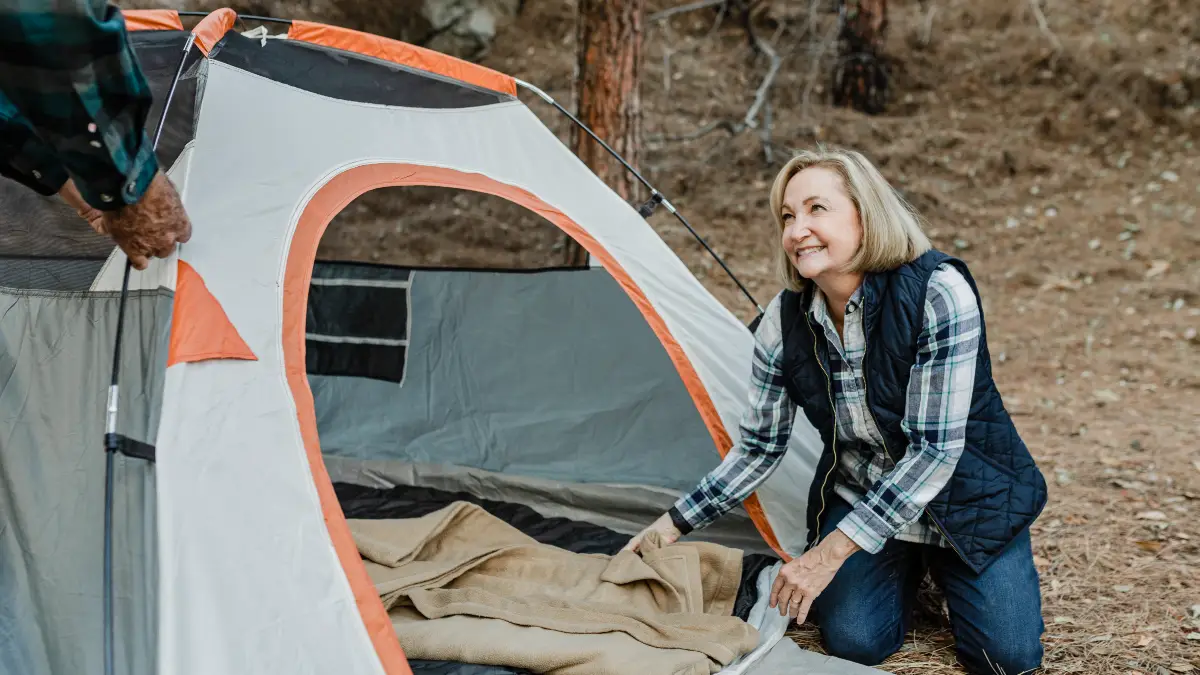
This mistake kills more campers than any other. Between 2020 and 2025, carbon monoxide caused 41% of all camping deaths. And here’s the scariest part: when ambulances arrived at these camping incidents, 39.5% of the victims were already dead.
The Consumer Product Safety Commission warns that people die every year from using portable camping heaters, lanterns, or stoves inside their tents. It happens fast. So fast that you might not even realize something’s wrong.
Here’s why carbon monoxide is so deadly: it grabs onto your blood cells 200-250 times stronger than oxygen does. Your body literally can’t get the oxygen it needs, even though you’re still breathing. You get drowsy. Then you pass out. Then you never wake up.
In 2015, a Colorado father and his 14-year-old son died in their tent. They’d been using a camp stove inside to stay warm. The two other kids in the same tent survived but were rushed to the hospital. The father was an experienced camper. Experience didn’t save him.
Never burn anything inside your tent. Not your camping stove. Not a heater. Not a lantern. Not even for “just a minute” to warm up.
Use battery-powered lights and heaters instead. Yes, they’re less powerful. But they won’t kill you.
Want extra protection? Buy a carbon monoxide alarm for under $30. Clip it inside your tent when camping. This tiny device could save your entire family. Test it before each trip. Replace the batteries regularly.
If someone seems confused or unusually sleepy while you’re using any fuel-burning device nearby, get everyone outside immediately. Fresh air first, questions later.
2. Improper Food Storage in Bear Country
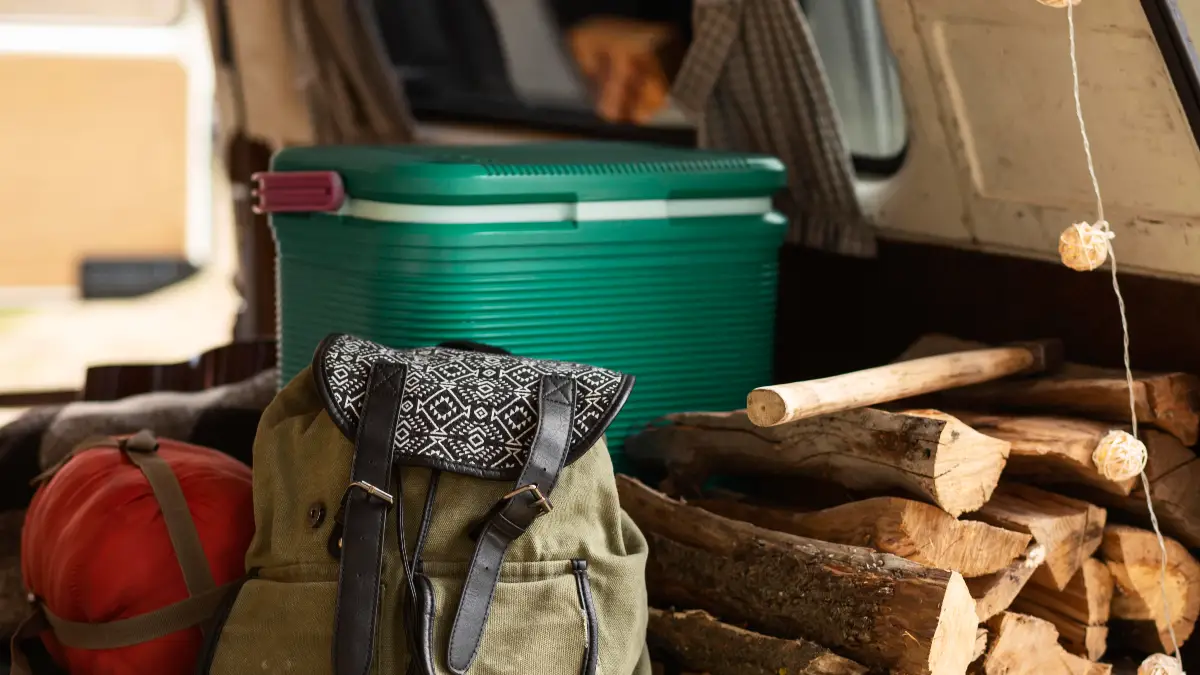
Last summer, Rob Holmes was on his first Montana fly-fishing trip. A black bear bit through his tent and latched onto his head, nearly tearing off his ear. He survived by shouting and scaring the bear away, then driving himself to the hospital. He was lucky.
Bears have an incredible sense of smell. And they consider anything with a scent as “food.” Your granola bars? Food. Your toothpaste? Food. Your sunscreen? Food. That fuel for your camp stove? Smells interesting, might be food.
When bears get human food, two terrible things happen. First, they lose their natural fear of people. They start approaching campsites, cars, and even people directly. Second, these “problem bears” almost always end up being killed by wildlife officials. A fed bear is a dead bear.
Here’s what actually works:
Store all scented items in bear-proof containers or bear bags. Place them at least 100 feet from your tent on flat, level ground. Never attach ropes to the containers – bears can drag them away. Don’t put containers near cliffs or water where bears might knock them around.
Many national parks require bear canisters. No canister? You could face heavy fines. Rangers don’t mess around with this rule because lives depend on it.
Carry bear spray and keep it on your hip, not in your pack. It stops charging bears 98% of the time. That’s better odds than any other defense method. Learn how to use it before you need it.
Even with 60% of campers still choosing tent camping over safer RVs or cabins, you can camp safely in bear country. Clean up immediately after eating. Never eat in your tent. Change clothes after cooking – food smells stick to fabric.
Bears aren’t monsters. They’re just hungry animals. Your job is to keep them wild and keep yourself safe. Proper food storage does both.
3. Ignoring Weather Forecasts and Warnings
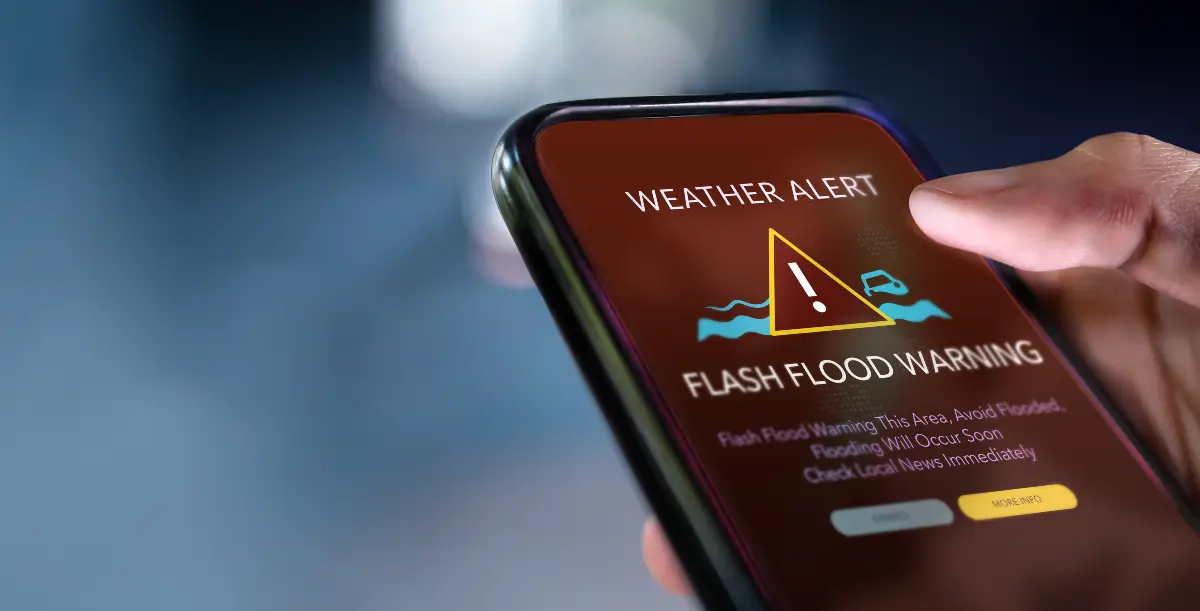
Weather in the mountains can change faster than you can zip up your rain jacket. At Rocky Mountain National Park, temperatures can drop 30-40 degrees in minutes. Even in August. One moment you’re in shorts, the next you’re fighting hypothermia.
About 33% of smart campers plan trips a month ahead to watch weather patterns. The other 67%? They’re the ones you see huddled in their cars or cutting trips short.
Common weather hazards that catch campers off guard include sudden flooding in desert canyons, afternoon lightning storms above treeline, and unexpected snow even in summer months. Each one can turn deadly fast.
Your weather safety plan needs three parts:
First, check multiple weather sources before leaving. The National Weather Service, Weather.com, and local ranger stations often show different details. Check them all.
Second, watch the sky while you’re out there. Dark clouds building by noon? Get off high peaks. Sudden temperature drop? Storm coming. Rivers running muddy? Flash flood risk upstream.
Third, pack for weather you don’t expect. Bring rain gear on sunny days. Pack warm layers in summer. Include emergency shelter like a bivvy or space blanket. These weigh almost nothing but could save your life.
Always have a backup plan. Know where you’ll go if weather turns bad. Identify sturdy shelter options. Know the fastest route back to your car. Tell someone where you’re going and when you’ll return.
If severe weather hits, don’t try to wait it out in your tent. Most tents can’t handle high winds, heavy snow, or flooding. Your car is safer. A park building is better.
Weather kills unprepared campers every year. But with proper planning and the right gear, you can handle whatever nature throws at you. Check the forecast. Pack smart. Stay flexible.
4. Poor Campfire Management
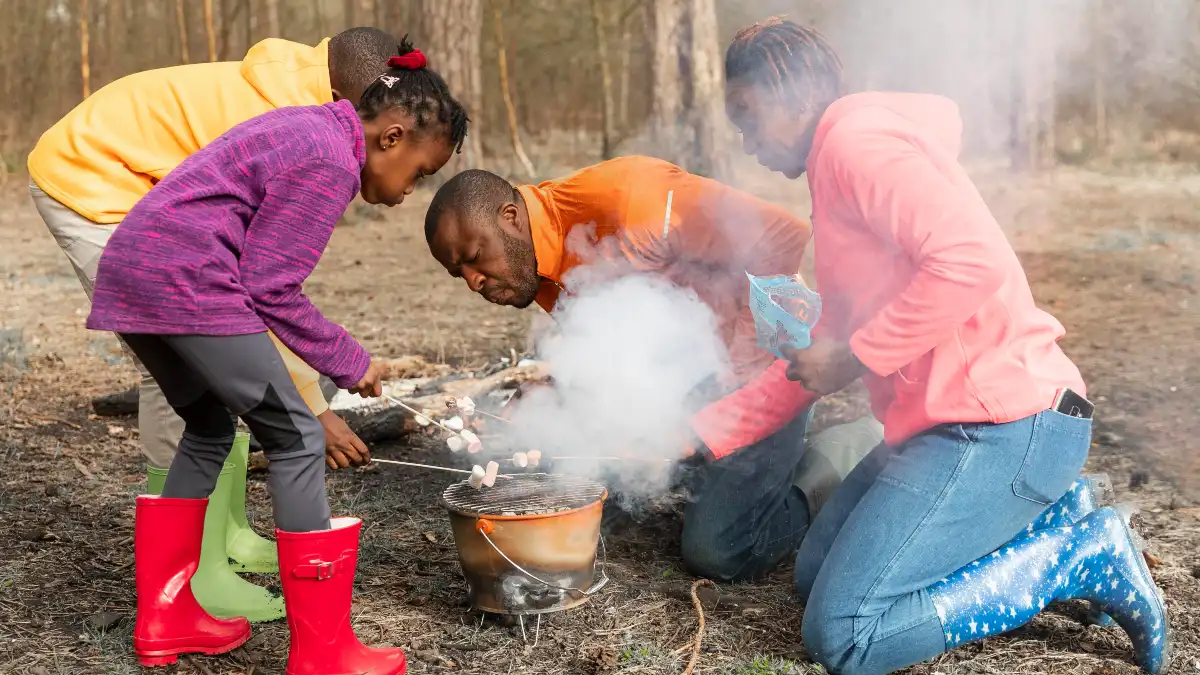
Fire mismanagement causes more camping emergencies than almost any other mistake. One spark in the wrong place can destroy thousands of acres and kill people. Yet many campers treat campfires like backyard BBQs.
The rules are simple but critical:
Keep your fire at least 15 feet from your tent, trees, and bushes. Look up too – branches above can catch fire. Build fires only in established fire rings when available. Never leave your fire alone, not even for a quick bathroom break.
Clear a 10-foot circle around your fire pit. Remove all leaves, twigs, and dry grass. Keep a water bucket and shovel next to your fire at all times. You need at least 5 gallons of water ready to dump.
When you’re done, let the fire burn down to ash. Pour water over everything – not just the red parts. Stir the ashes with a stick. Pour more water. Keep going until you can touch the ashes with your bare hand. If it’s too hot to touch, it’s too hot to leave.
Never burn your trash or leftover food. It seems logical, but campfires aren’t hot enough to completely burn organic matter. Those half-burned scraps? They attract bears and other wildlife straight to your campsite.
Store matches and lighters in a waterproof container outside your tent. Keep them at least 15 feet from your sleeping area. Kids should never have access to fire-starting materials without adult supervision.
During fire bans, use camp stoves instead. Yes, even if you’re cold. One illegal campfire can land you with thousands in fines and criminal charges if it spreads.
Wind changes everything. What starts as a calm evening can turn windy fast. If wind picks up, put your fire out completely. Flying embers can travel hundreds of feet and start new fires.
Fire warms our bodies and our spirits while camping. Respect it, control it, and never underestimate its power to destroy.
5. Arriving at Campsite After Dark
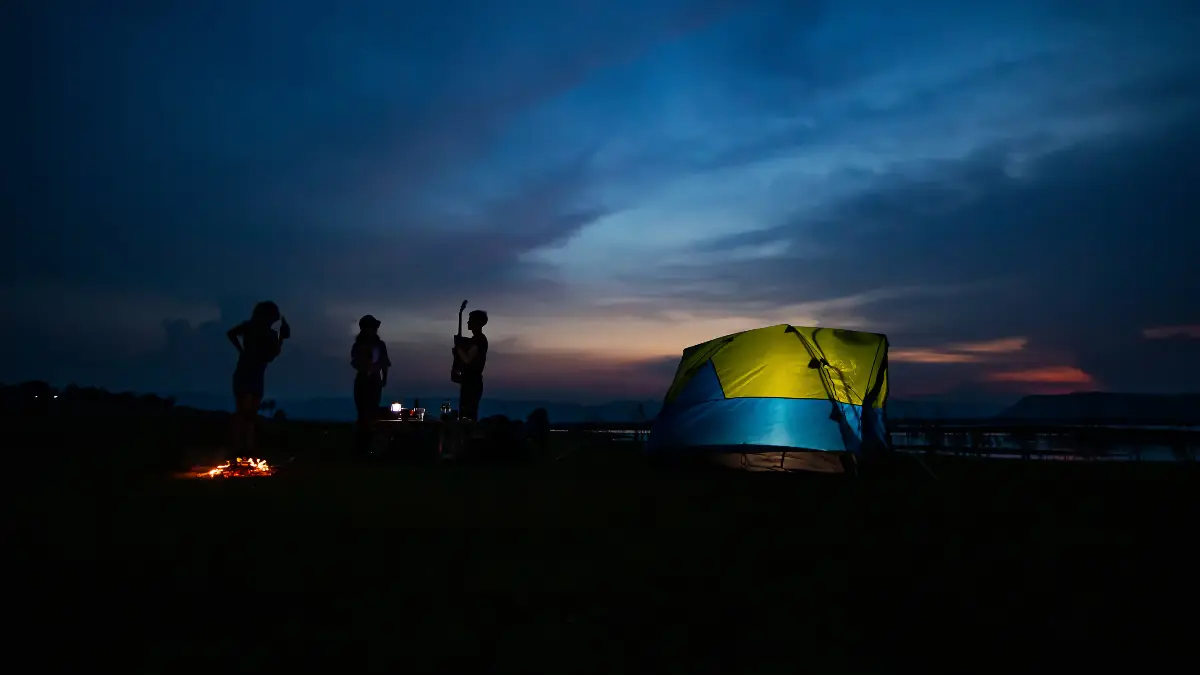
Setting up camp in the dark is like trying to assemble furniture blindfolded. You’ll miss important details, make dangerous mistakes, and probably hurt yourself. Yet countless campers do exactly this every weekend.
You can’t see that patch of poison oak next to where you’re putting your tent. You won’t notice the ant hill until morning when you’re covered in bites. That cliff edge 20 feet away? Invisible in the darkness.
Wildlife is more active at night. Bears forage. Snakes hunt. Mountain lions move through territories. Your headlamp and noise might surprise them, leading to dangerous encounters. Animals you’d easily avoid in daylight become real threats.
Plan to arrive at least 2 hours before sunset. This gives you time to pick a safe tent spot, set up properly, gather firewood, and prepare dinner while you can still see. It also lets you scout the area for hazards.
If you must arrive late, sleep in your car the first night. Seriously. It’s safer and warmer than a poorly placed tent. Set up properly in the morning when you can see what you’re doing.
Use your headlamp to check for specific dangers: animal tracks, fresh scat, disturbed ground, dead trees that could fall, and water drainage patterns. But remember – your headlamp only shows a small area at a time.
Mark guy-lines with reflective tape or glow sticks. These tent ropes become invisible trip hazards in the dark. One bad fall can end your trip with a broken bone or head injury.
Your camping arrival time matters more than you think. That extra hour of driving to arrive in daylight? Worth it every time. Your safety depends on seeing what’s around you.
6. Inadequate First Aid Preparation
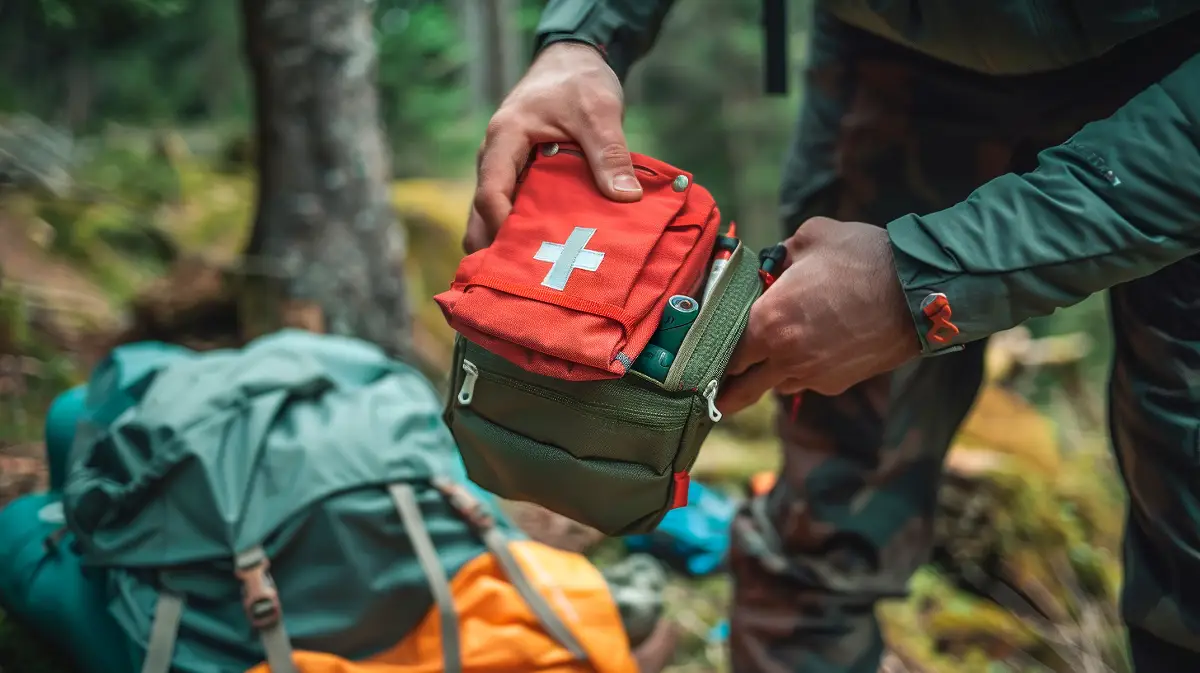
You’re miles from the nearest hospital. Someone in your group gets hurt. Now what? If you don’t have proper first aid supplies and knowledge, a minor injury becomes a major emergency fast.
Many campsites sit in remote areas where ambulances can’t reach you. Even calling 911 might be impossible without cell service. You become the first responder whether you’re ready or not.
Your camping first aid kit needs more than Band-Aids. Include antibiotic cream for cuts, antiseptic wipes for cleaning wounds, various sized bandages and gauze, pain relievers like ibuprofen, allergy medication including an EpiPen if needed, tweezers for splinters and tick removal, and elastic bandages for sprains.
Don’t forget prescription medications. Bring extra in case your trip runs long. Include any specialized medical supplies group members need – inhalers, insulin, heart medication. Store medications in waterproof containers.
Communication devices save lives in emergencies. Your cell phone might not work, so consider a personal locator beacon or satellite communicator. These devices cost $200-400 but work anywhere in the world. Press a button, and rescue teams get your exact location.
Know how to use everything in your kit before you need it. Take a wilderness first aid course. Practice treating fake injuries. Learn to recognize serious symptoms like shock, heat stroke, and allergic reactions.
Nearest hospital location, park ranger phone number, evacuation routes, and medical histories of group members. Keep this paper in a waterproof bag in your first aid kit.
Most camping injuries are preventable. But when accidents happen, your preparation determines whether it’s a minor inconvenience or a life-threatening situation. Good first aid preparation means everyone goes home safely.
7. Choosing Wrong Clothing for Cold Weather
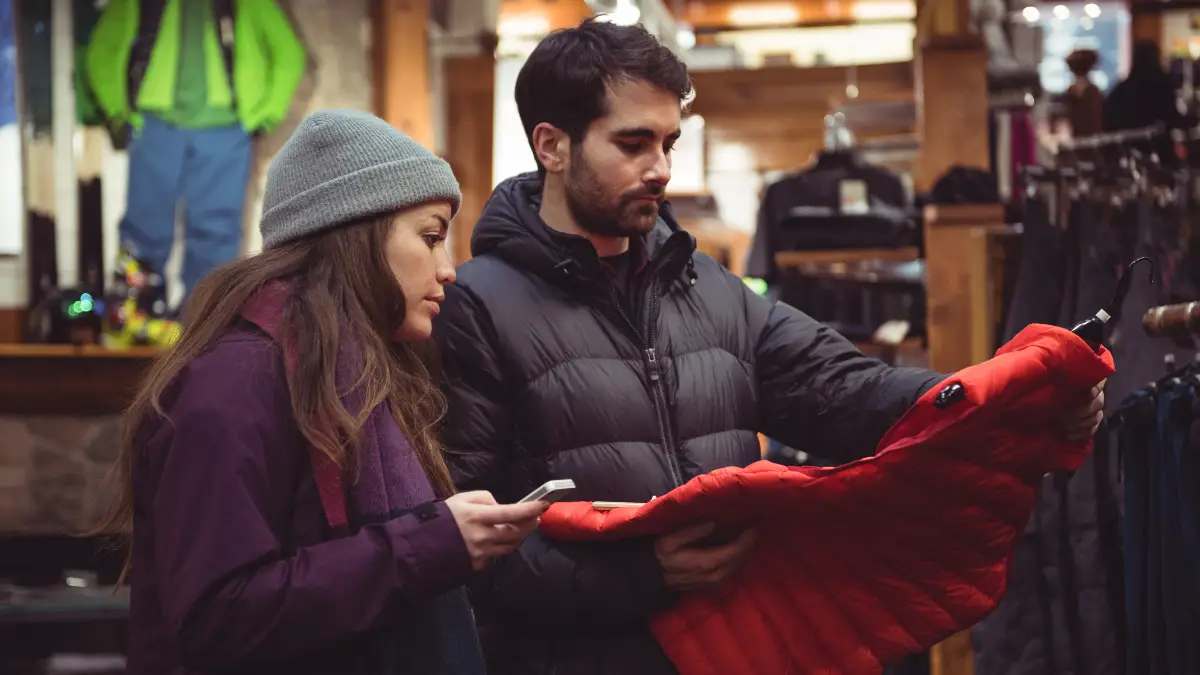
Cold weather kills more Americans than you’d expect. Between 2017 and 2022, cold-related deaths increased by 95%. Most victims weren’t prepared for temperature changes. Don’t become a statistic.
Cotton clothing is your enemy when camping. Once cotton gets wet – from sweat, rain, or morning dew – it stops insulating. You get cold. Then colder. Hypothermia can start at 60°F if you’re wet and tired.
Synthetic fabrics and wool keep you warm even when wet. They pull moisture away from your skin and dry quickly. Yes, they cost more than cotton. Your life is worth the extra money.
Layer your clothing like this: moisture-wicking base layer against your skin, insulating middle layer like fleece or down, and waterproof outer shell to block wind and rain. You can add or remove layers as temperatures change.
Your body loses heat from any exposed skin, but especially from your head, hands, and feet. Bring warm hats, waterproof gloves, and extra socks. Change socks daily – foot sweat makes them damp, and damp feet get cold fast.
Night temperatures drop more than most people expect. That sunny 70°F afternoon? It might hit 35°F by 3 AM. Your summer sleeping bag won’t cut it. Check your bag’s temperature rating and add 10 degrees for safety.
Keep one set of clothes just for sleeping. Never sleep in the clothes you wore all day – they’re probably damp from sweat. Change into dry clothes before getting in your sleeping bag.
Emergency blankets, chemical hand warmers, and extra insulation for your sleeping pad. These cheap items weigh almost nothing but provide crucial warmth if things go wrong.
Hypothermia doesn’t just happen in winter. It happens when you’re unprepared. The right camping clothing keeps you warm, dry, and alive.
8. Drinking Contaminated Water
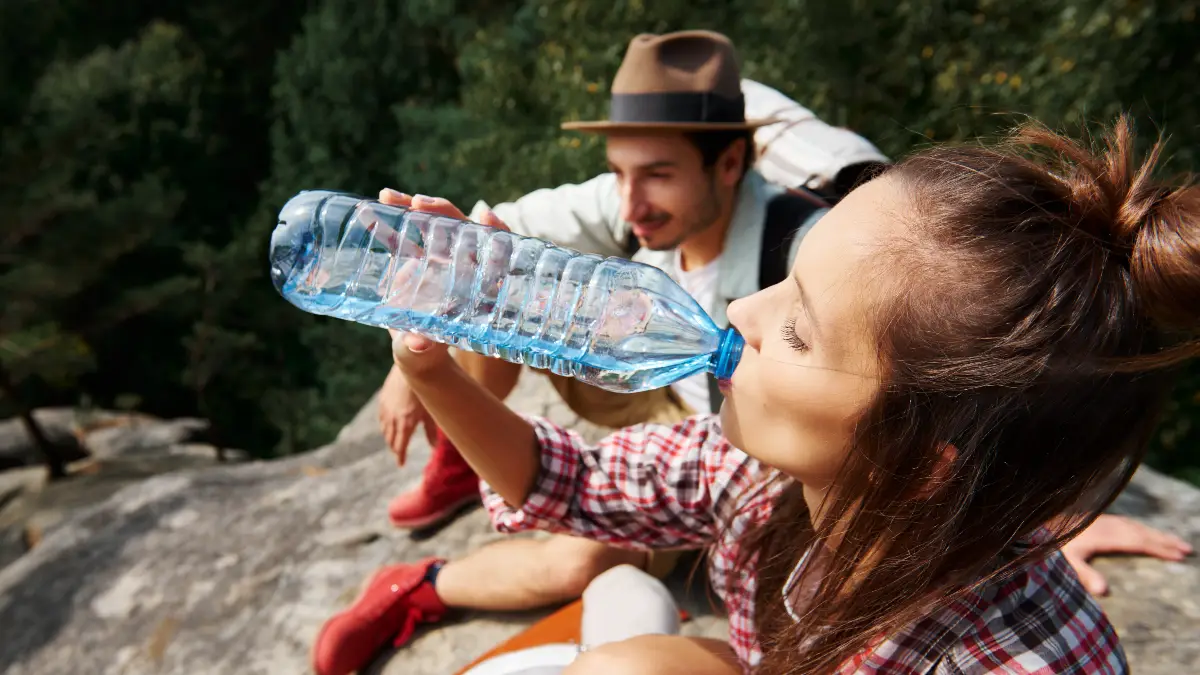
That crystal-clear mountain stream looks pure and refreshing. But it’s probably full of Giardia, bacteria, and other nasties that’ll have you running for the bushes every 10 minutes. One in six Americans gets sick from contaminated food or water each year.
Giardia lamblia lives in most wilderness water sources. Animals poop upstream. The parasites flow downstream. You drink the water. Within days, you’re dealing with explosive diarrhea, severe cramps, bloating, and nausea that can last weeks.
Never drink untreated water, no matter how clean it looks. That includes springs, streams, rivers, and lakes. Even water from snow isn’t safe without treatment.
Boiling water for at least one minute kills everything but takes time and fuel. Water filters remove parasites and bacteria but not all viruses. Purification tablets kill most organisms but leave a chemical taste.
Bring backup methods. Filters can break. You might run out of fuel. Tablets expire. Having two ways to purify water ensures you always have safe drinking water.
Store treated water in clean containers. A dirty water bottle contaminates clean water instantly. Mark containers clearly – one for dirty water, one for clean. Never mix them up.
Pack enough water for your drive to the campsite plus your first day. This lets you set up camp and get oriented before worrying about water sources. Figure at least one gallon per person per day, more in hot weather.
Dehydration is dangerous too. If you’re rationing water because purification is hard, you’re doing it wrong. Drink plenty. Just make sure it’s clean first.
Safe water isn’t optional when camping. It’s essential. Take it seriously or spend your trip sick in the woods.
9. Inadequate Wildlife Precautions
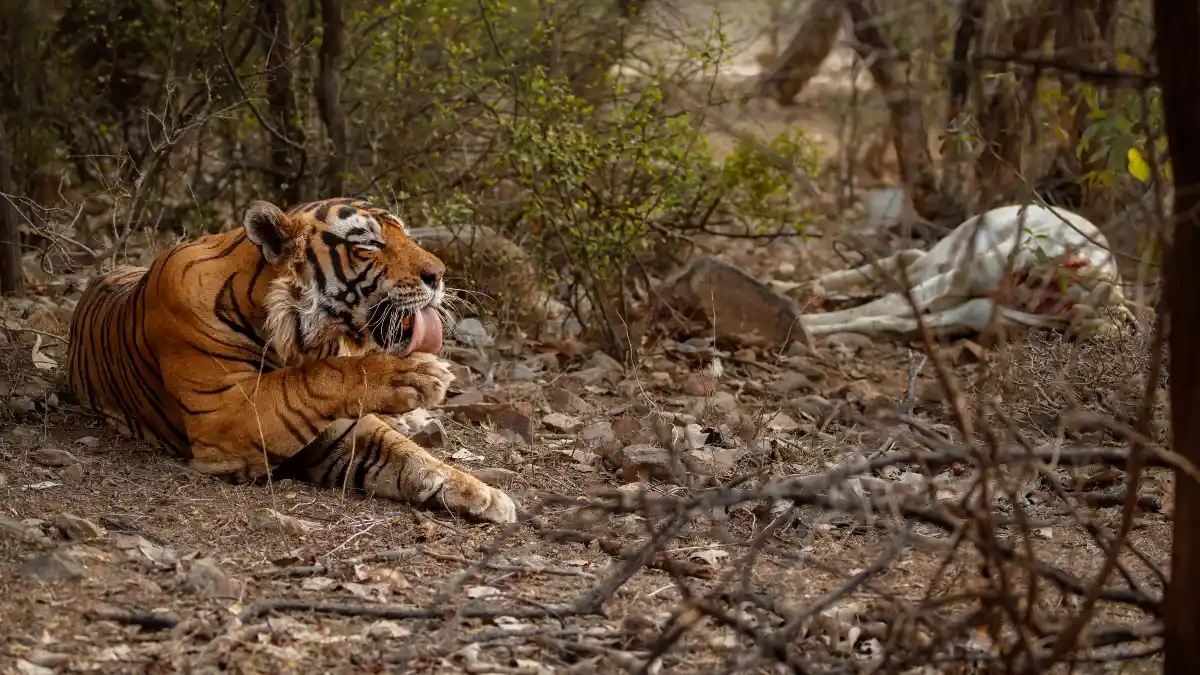
Wildlife encounters happen more often than most campers expect. Snake bites, tick-borne diseases, and animal attacks send thousands to hospitals yearly. But you can prevent most problems with basic precautions.
Snake bites are one of the most common camping injuries. Most happen when people accidentally step on or near snakes they didn’t see. Wear boots, not sandals. Use a walking stick to probe ahead in tall grass. Watch where you put your hands when climbing rocks.
Ticks are everywhere and they carry serious diseases. Check your entire body every evening. Look behind ears, in your scalp, under arms, and in your groin area. Remove ticks immediately with tweezers, pulling straight out. Save the tick in a bag to show doctors if you get sick.
Use insect repellent that won’t wash off easily. Spray your clothes, not just skin. Tuck pants into socks to keep ticks from crawling up your legs. It looks dorky but prevents Lyme disease.
Never feed wildlife. Not even birds or squirrels. Fed animals lose their fear of humans and become aggressive. That “cute” chipmunk will bite fingers looking for food. Those ravens will tear apart your campsite.
Travel in groups when possible. Groups of four or more people are less likely to face animal attacks. Make noise while hiking to avoid surprising animals. Most want nothing to do with humans if given the chance to leave.
Keep a clean camp. Food smells attract everything from ants to bears. Store scented items properly. Don’t leave dirty dishes out. Pack trash immediately.
If you see a wild animal, don’t approach for photos. Use zoom lenses or binoculars. Teach kids to never run from or toward animals. Running triggers predator instincts.
Wildlife makes camping magical. Respect animals’ space and follow safety rules, and you’ll have amazing encounters without dangerous confrontations.
10. Driving Dangers to Campsites

11.5% of deaths in national parks happen from driving accidents. In some parks, nearly all fatalities are vehicle-related. That scenic drive to your campsite might be the most dangerous part of your trip.
Mountain roads aren’t like city streets. They’re narrow, winding, with steep drop-offs and no guardrails. Add wildlife, loose gravel, and weather changes, and you’ve got serious hazards.
Animal-vehicle collisions spike around dawn and dusk when wildlife is most active. Deer, elk, and even bears cross roads without warning. Hit a large animal at highway speeds, and everyone’s in danger.
Those beautiful views become deadly distractions. Drivers look at scenery instead of the road. Passengers point out sights. One moment of distraction on a cliff-side road can be fatal.
Pull over safely to enjoy views. Use designated pullouts only. Never stop on narrow roads where others can’t pass. That Instagram photo isn’t worth causing an accident.
Drive slower than you think necessary. Posted speed limits are for perfect conditions. Add rain, fog, or darkness, and you need to slow way down. Other drivers might be inexperienced with mountain roads.
Check your vehicle before leaving home. Mountain driving strains brakes, transmission, and cooling systems. Brake failure on a steep downhill? Nightmare scenario. Make sure everything works perfectly.
Avoid driving backcountry roads at night. Your headlights can’t show hazards like washouts, fallen rocks, or animals until it’s too late. If you must drive after dark, go extremely slow.
Inform someone of your route and expected arrival. Some backcountry roads have no cell service for miles. If you break down or crash, help might not find you for days.
Getting to camp safely is the first step in a great trip. Take the drive seriously.
11. Poor Physical Preparation

Falls are one of the leading causes of death in national parks. People overestimate their fitness, underestimate the terrain, and push beyond their limits. Then gravity wins.
Altitude hits harder than expected. Above 8,000 feet, there’s less oxygen in each breath. Your body works harder for basic tasks. Simple hikes become exhausting. Altitude sickness can strike anyone, causing headaches, nausea, and dangerous confusion.
Match activities to your group’s real fitness level, not what you wish it was. Be honest. When was the last time you hiked 5 miles? Can everyone in your group handle steep climbs? What about kids or older adults?
Start with easier trails and shorter distances. You can always do more if everyone feels good. But once someone’s exhausted or injured miles from camp, you’re in trouble.
Train before your trip. Walk hills in your neighborhood. Carry a loaded backpack around the block. Build stamina gradually. Your body needs time to adapt.
Know danger signs: unusual fatigue, dizziness, chest pain, or severe headache. These aren’t normal camping tiredness. They’re warnings. Stop, rest, and head back if symptoms persist.
Bring trekking poles for stability on uneven ground. They prevent falls and reduce knee strain. Even experienced hikers use them. There’s no shame in safety equipment.
Stay hydrated and eat regularly. Your body burns more calories camping than sitting at home. Low blood sugar and dehydration cause poor judgment and coordination.
Turn back before you have to. Summit fever – the urge to reach your goal despite danger – kills hikers every year. The mountain will be there next time.
Physical preparation isn’t about being tough. It’s about being smart. Know your limits, respect them, and everyone has a great time.
12. Leaving Food Scraps and Trash

“It’s just a banana peel.” “Apple cores are natural.” “This will decompose anyway.” Wrong, wrong, and wrong. Your food scraps create serious problems that last long after you leave.
Food scraps teach wildlife that campsites equal easy meals. Bears, raccoons, and rodents learn to associate humans with food. They become bold, aggressive, and dangerous. These animals often end up destroyed.
Pack out everything you pack in. Every wrapper, peel, core, and crumb. Use a designated trash bag and seal it tight. Double-bag if necessary to prevent leaks and smells.
Don’t try burning food waste in your campfire. Normal campfires aren’t hot enough to completely burn organic matter. Those partially burned scraps still smell like food and still attract animals.
Micro-trash matters too. Those tiny pieces of granola bar wrapper? Birds eat them and get sick. Bits of plastic? They last decades in the environment. Check your campsite carefully before leaving.
Wash dishes 200 feet from water sources. Use biodegradable soap sparingly. Scatter dishwater over a wide area, not in one spot. Pack out food particles caught in your strainer.
Human waste needs proper handling too. Use established toilets when available. Otherwise, dig catholes 6-8 inches deep and 200 feet from water, trails, and camps. Pack out toilet paper in a sealed bag.
Your camping impact lasts long after you leave. That orange peel takes two years to decompose. Aluminum cans last 200 years. Glass bottles? Basically forever.
Leave No Trace isn’t just a cute saying. It’s a responsibility. Future campers deserve a clean wilderness. Wildlife deserves uncontaminated habitat. Do your part. Pack it in, pack it out. Every single time.

